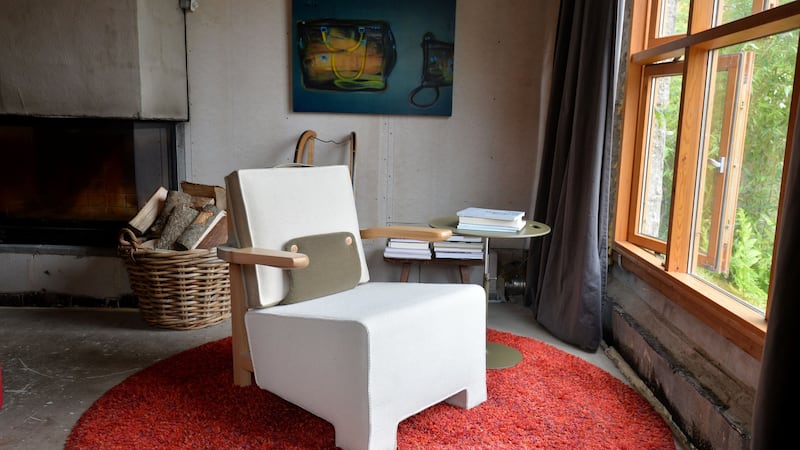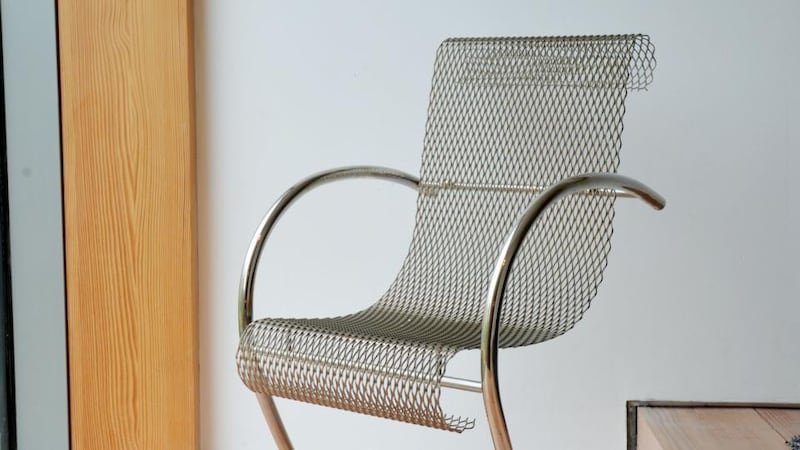Garrett O'Hagan has been long associated with bringing modern international furniture to Ireland. His interest in design grew from an early age, when fashion drew him into its wider aspects and applications.
In the late 1980s and early 1990s, he worked in the Capel Street furniture store founded in by his father in 1971. "But it wasn't moving fast enough for me", so he opened Haus in Temple Bar, specialising in European designer furniture for homes and offices. Haus traded from 2005-2009.
After his father's retirement, he took over the business. O'Hagan Design now operates from a spacious contemporary furniture store in Sandyford.


His own new range of furniture – called Aran – made its debut during London Design Week. It was described by Monocle magazine as one of the 25 most interesting businesses in the world of design.
Describe your interiors style
Our business is about contemporary timeless style – design that is long-lasting, both in aesthetics and quality of materials and is about making sound decisions when it comes to the environment.
My interest is helping people to select furniture that meets those criteria and that they have some point of interaction and relationship with it. If spaces do not animate the occupant, then in my mind they have failed.
The user has to engage in the process for it to be rewarded, and that is the essence of my idea of good design. The user is integral to the solution.
Which room do you most enjoy, and why?
I think of music or paintings or things that I like – I never like to be so definite. Because sometimes the light lands in the kitchen in the morning and for that day that room is the room you love. Another day it could be what you see from the bedroom window, and all of a sudden that room becomes your favourite.
As a visitor, I love people’s living rooms because there is a sense of what they like – it could be books or art or the lack of both. Living rooms are probably the most revealing.
What items do you love most?
I have a chair from the Japanese designer Shiro Kuramata, who died in 1990, called Sing Sing Sing. This particular designer had a very ethereal and poetic sense of design – it was if he knew that function should also be strongly emotional.
You may not often sit in a given space, but you can enjoy the chair in the same way as a painting or sculpture. He used aluminium and mesh, so the light shines through them.
The other item is a new chair we have designed called Aran, which has taken us four years to complete with an Italian designer based in Vienna called Alex Gufler. I wanted to create something extremely quiet in terms of aesthetics and keep the colour close to the colour of driftwood. You think about colour in quite a different way if it is going to be there for a long time.
I also have a sofa and chair from a Dutch designer called Hella Jongerius, who has spent the last four of five years doing nothing but research on what colour means.
Her designs are original and challenging. I first came across her in the early 1990s, when she exhibited a single chair under a bridge in Brick Lane – a three-legged, quite primitive object in carbon fibre with a lambswool seat.
Who is your favourite designer?
Some of the most inspirational furniture designers at the moment are women who bring a completely different dimension to their work.
Ilse Crawford
(the first editor of
Elle Decor
) is one of the most progressive in terms of creativity and meaningful interiors. She can take objects from different decades and rearrange them in different textures which are strongly researched-based.
Her project with Ikea was ground-breaking because the objects were very sophisticated in terms of ideas. And to push a giant like Ikea that far is a test of her ability – from making lounges for Singapore Airlines to a capsule collection for Ikea is a handful to take on.
Which artists do you most admire?
What is close to you I find interesting, and in the last 10 to 15 years I have been looking at Irish art.
I love Willie McKeown and Dorothy Cross, and I have a small painting by Liz Magill with coloured lines which makes me smile. It's work that forces you to interact with it every day. I think what Stoney Road Press is doing is very important.
The first piece of art I ever bought was a Richard Gorman. The work of Michael Warren, the sculptor is nice to be around, and Scott Tallon Walker architects really understood that art had such a powerful role in a building.
What is your biggest interior turn off?
Filling spaces with fake objects, fake Eames chairs or whatever. I would far prefer to walk into a space where the budget is €50 and is lovelier than one with Eames fakes that really have none of the subtlety and material quality they should have and often look out of place.
People should not be distracted by instant iconic images on social media that suggest that the latest object will make the space more beautiful. In my opinion, that is not the case. Ireland is the only country in the EU that allows fake furniture copies – of Eames, Panton, and Eileen Gray -–to be sold. The less you put in a space, the easier and more pleasure you will get from it. Taking so much visual noise away is to have a refuge, a place soothed by its simplicity and quality of natural materials.
Which travel destination stands out?
I love the mountains in general and once used to run across the Sugarloaf. One destination that stands out is Vals in
Switzerland
, where the thermal baths were designed by
Peter Zumthor
. He created this simple pared-back building of local stone, which is very high up in the mountains and very democratic. The only other material used is brass.
And I love Connemara.
If you had €100,000 to spend on anything for the home, what would it be?
I think furniture designer
Joseph Walsh
is very special and pushing the limits of materials all the time. But delaying the enjoyment of art and design on the basis that you need €100,000 is a huge loss. A stool for €40 at Ikea is one of the loveliest things I use and enjoy.












